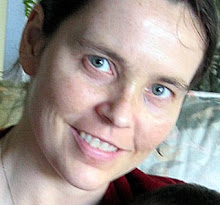
Remember the charming little song, “Beans, beans, they’re good for your heart. The more you eat, the more you fart.”? Well, what the song says is
true, and that’s why it's still around and still funny.
I’ve recently come across a great source for dried chickpeas, hence the subject of beans, and so I’ve been cooking with a lot of chickpeas recently. The source, incidentally, is the bulk bin at
PCC Edmonds and the reason these chickpeas are so great is that they plump up into fat, tender morsels when I soak and cook them. I wouldn’t be so impressed if I’d had the same experience with other dried chickpeas – usually they turn out smaller, and even after soaking and proper cooking the skin is still a little tough, and the inside can be mealy. This may happen with dried beans if they are old and past their prime, so either the bulk bins at PCC have a high turnover (which I don’t doubt, considering the locals’ dedication to PCC) or they’ve recently bought a particularly fresh batch of dried chickpeas.
A little about the nutritional value of chickpeas for those who want to know. For lots of great information about chickpeas, visit the
World’s Healthiest Foods. Chickpeas, also called
garbanzo beans, are a type of legume. Legumes are famously high in fiber, and it’s the fiber that is the cause of the gas-producing aspect of beans, but that’s a fair trade-off in my opinion. Fiber is, by definition, the indigestible carbohydrates in food, but these carbs are literally grist for the mill for the bacteria in the colon. The bacteria ferment the carbs and produce carbon dioxide and hydrogen as byproducts. There’s nothing harmful about this gas, though it can be uncomfortable for some people, or embarrassing in social situations.
Fermentation of fiber in the colon also produces
short-chain fatty acids (SCFA). Besides fueling the cells that line the intestines, SCFAs help keep blood sugar levels stable and contribute to a healthy immune system. The fiber content is also the reason beans have a reputation for being heart-healthy. The soluble fiber in beans has the ability to soak up cholesterol and fatty acids and carry them out of the body, bypassing absorption.
Legumes are an inexpensive and plant-based source of protein, which is why they are a staple for vegetarians and are prominently featured in traditional foodways all over the world. Chickpeas in particular have been cultivated for about 9,000 years in southwest Asia. When I want to cut back on my grocery bill for the week, I make sure to plan a couple of meals based on legumes. Right now, I’ve got lentil soup in the fridge (from the recipe in the
Moosewood cookbook), some cooked chickpeas waiting to become hummus, and leftovers of this Greek-style dish of roasted garbanzo beans, redolent of fennel and caramelized shallots.
 Roasted Garbanzo Beans with Swiss ChardMakes 6 servingsIngredients
Roasted Garbanzo Beans with Swiss ChardMakes 6 servingsIngredientsGarbanzo Beans:
1 3/4 cups dried garbanzo beans (equivalent to 12 ounces dried beans, or 5 1/2 cups cooked beans), soaked overnight in twice the volume of water
10 garlic cloves, peeled
2-4 large shallots, peeled and sliced
3 small bay leaves, preferably fresh
2 teaspoons fennel seeds
1/4 cup extra-virgin olive oil
Chard:
2 tablespoons extra-virgin olive oil
6 garlic cloves, peeled, crushed
3 small bay leaves, preferably fresh
2 shallots, sliced
2 bunches Swiss chard, center stems cut out and chopped, leaves coarsely torn
1/2 cup chicken broth
Optional: Lemon
PreparationTo cook chickpeas:
Discard soaking water. Place chickpeas in a pot with water (about three cups of water per cup of beans) and bring to a boil. Adding a couple of bay leaves at this point really infuses the beans with flavor. Lower the heat to a simmer, cover, and cook until tender, about one hour (may take longer depending on age of chickpeas). When chickpeas are done, salt water generously (the water should taste like seawater) and allow them to cool in salted water.

Garbanzo beans:
Preheat oven to 350 degrees F. Combine first five ingredients in 9 x 13-inch glass baking dish. Sprinkle with salt and pepper. Pour oil over and stir; cover dish with foil. Roast until garlic is tender, about 35-40 minutes. Remove foil, turn oven to 450 degrees F and cook for 5-10 minutes more, or until shallots and garlic become slightly brown and caramelized.
Chard:
Heat oil in large pot over medium-high heat. Add garlic, bay leaves, and shallots. Saute about 5 minutes, or until shallots are tender. Add chopped chard stems, sprinkle with a little salt, and sauté about 5 minutes. Add chard leaves to pot, sprinkle with salt to taste and cover. Cook until chard wilts and volume is reduced by half, about 2-3 minutes. Add broth. Cover and cook until chard is tender, stirring occasionally, about 10 minutes.
Discard bay leaves from garbanzo beans and chard. Add garbanzo beans to the chard mixture and toss over medium heat until warmed through, moistening with more oil or chicken broth if needed. Season with salt and pepper to taste and serve.
I always serve this over brown rice and sprinkled with fresh lemon juice. Next time I make it, I think I’ll try adding lemon zest to the chard. I'll have more chickpea recipes up soon, like Chickpea Leek Soup!
 Adapted from a recipe by Michael Psilakis, Bon Appetit, January 2008
Adapted from a recipe by Michael Psilakis, Bon Appetit, January 2008






















